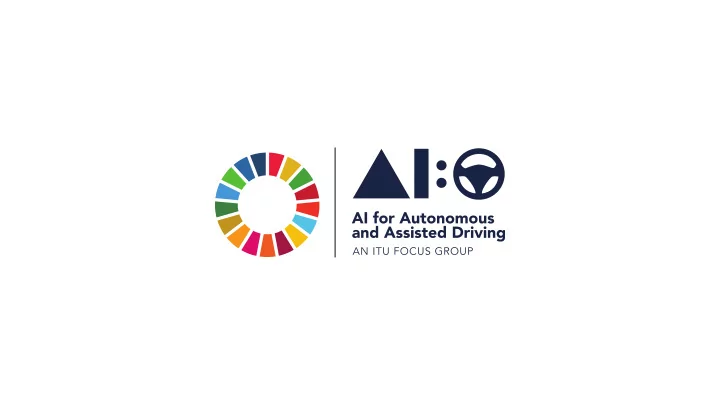

Convention on Road Tra ffi c in view of Automated Driving Observation #1- Equivalence between all drivers is implicit • Equivalence in behavioural expectations between all drivers is the foundation for safety in a shared tra ffi c environment. Which enables behavioural prediction of other road users and compensatory actions to accommodate others mistakes. • The principle of equivalence should apply equally to “automated driving algorithms” and “humans” which are both responsible for situational awareness , risk assessment and appropriate action required for safe execution of the dynamic driving task in road tra ffi c. • The objective of holding "automated driving algorithms" to the same “reasonable and prudent” account as human drivers defines the need for continual behavioural evaluation during execution of the dynamic driving task. This is the core need around which the ITU FG-AI4AD was established.
Convention on Road Tra ffi c & Automated Driving Observation #2- Driver “learning” is implicit & essential • The safety assumptions in the issuance of International Driving Permits are based on assumed “transfer learning” capability e.g. safe driving in London transfers to safe driving in New York without any requirement for retraining or acquisition of local skills • Both “continual learning” and “transfer learning” underpin the issuance of Domestic Driving Permits . It’s these cognitive skills that enable drivers to adapt to di ff erent cars, roads, weathers and tra ffi c situations beyond those assessed in a one-time licensing test. • Both “continual learning” and “transfer learning” abilities are not proven for automated driving algorithms . • Until this proof scenario-based testing will remain an inadequate measure of the real world driving behavior that is expected within the Convention on Road Tra ffi c. • The issuance of driver permits for di ff erent vehicle categories is well established. However, current proposals for issuance of Operational Design Domain (ODD) restricted driving permit is a completely new category of driver licensing not considered in the Convention on Road Tra ffi c Highly Restricted During
Convention on Road Tra ffi c & Automated Driving Observation #3 - Separation of driving algorithms from vehicles • Automated driving algorithms drive, Automated vehicles are driven. • The SAE J3016 terminology of Automated Driving System (ADS), which includes software and hardware, is not congruent with the Convention on Road tra ffi c definitions of “ driver” and “vehicle” . • A new definition that clearly separates “automated driving algorithms” which are responsible for driving behaviour and the underlying “automated driving system” that provides a platform of sensors, actuators, communications, computers and operating systems as part of an “automated vehicle” . • “Automated driving algorithms” should be permitted to drive specific categories of “ automated vehicle . Based upon a matching of the “automated driving algorithm” requirements and the “automated vehicle” capabilities. • The interface between “automated driving algorithms” and “automated vehicles” needs to be defined to ensure an open market place for “drivers” and “vehicles” used to create “mobility services”.
Convention on Road Tra ffi c & Automated Driving Observation #4 - Two regulatory systems for “drivers” • Convention of Road Tra ffi c changes that position automated vehicles as not requiring a driver , thereby violate the principle of equivalence between the entities responsible for the dynamic driving task. The risk leading towards two independent regulatory systems for drivers ; • Humans drivers comply to a "Safety by Design” regulatory system, with common acceptance of the Safe System approach and guided by the Global Forum for Road Tra ffi c Safety ( WP .1 ). • Automated Driving Systems comply to a “Liability by Design” regulatory system guided by the World Forum for Harmonization of Vehicle Regulations ( WP .29 ). • In terms of EU Product Liability Directive “justified expectation of users” for the driving behaviour of the “automated driving algorithms” should be set by the Convention on Road Tra ffi c . • Clear separation between “automated driving algorithms” from “automated driving system” is required to remove this ambiguity.
ITU-T Focus Group on AI for Autonomous & Assisted Driving FG-AI4AD • Expected behavioural proofs for “automated driving algorithms” on our roads Prove AI Software never engages in careless, dangerous or reckless driving behaviour. In accordance to Article 7 of the 1949 Convention on Road Traffic “ not to endanger” Prove AI Software meets, or exceeds , the performance of a competent and careful human driver In accordance with Article 10 of the 1949 Convention on Road Traffic “ reasonable and prudent ” driving Prove AI Software remains aware , willing and able to avoid collisions at all times In accordance to Article 7 of the 1949 Convention on Road Traffic “ shall avoid all behaviour that might cause damage to persons, or public or private property .”
Next FG-AI4AD meeting: 4-5th May 2020 Hosted by ITU Coinciding with the AI for Good Global Summit: https://aiforgood.itu.int/
Chair ITU FG-AI4AD Bryn Balcombe: bryn@ada.ngo General mailing list: fgai4ad@lists.itu.int Dedicated secretariat email: tsbfgai4ad@itu.int Dedicated webpage: www.itu.int/en/ITU-T/focusgroups/ai4ad
Recommend
More recommend